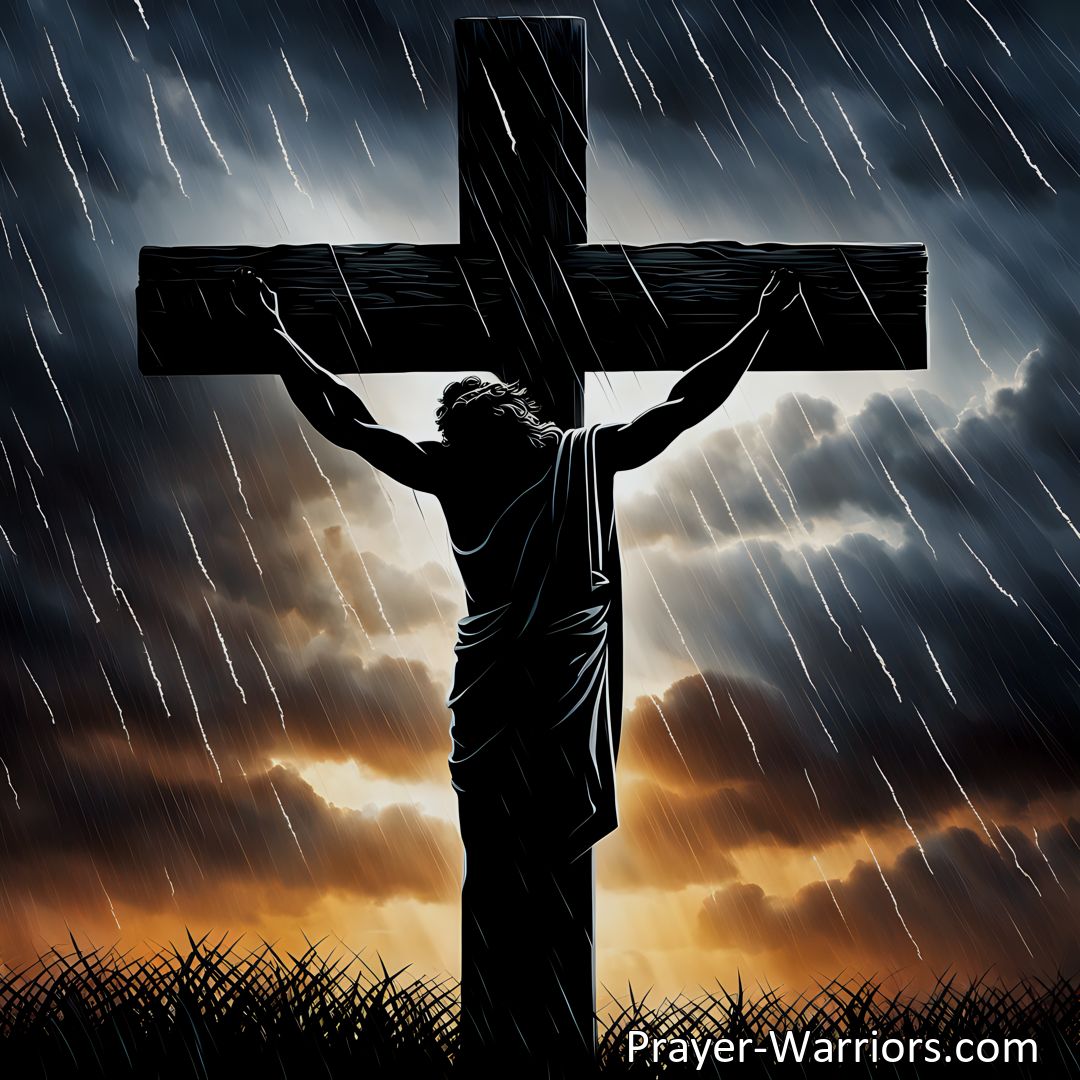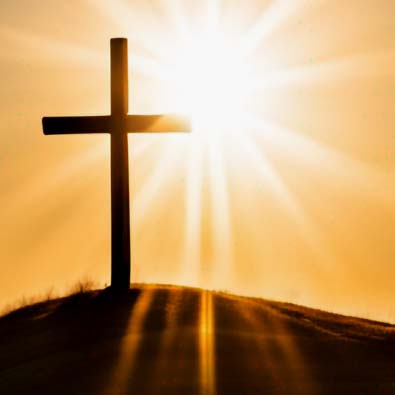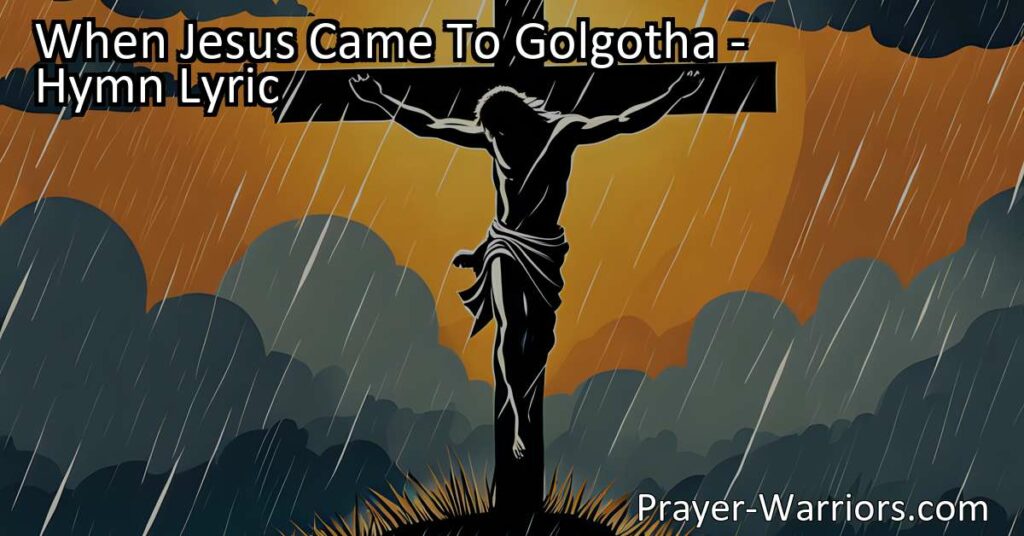When Jesus Came To Golgotha – Hymn Lyric
“When Jesus Came to Golgotha: A Reflection on Forgiveness and Compassion” is a powerful hymn that captures the brutal crucifixion of Jesus and the indifference of the people around him. It challenges us to reflect on our actions, seek forgiveness, and show compassion towards others. Through the enduring message of Jesus’ sacrifice, we can create a world where love and kindness prevail.
Table of Contents
When Jesus Came To Golgotha – Hymn Lyric
When Jesus came to Golgotha, they hanged him on a tree,
They drove great nails through hands and feet, and made a Calvary;
They crowned him with a crown of thorns, red were his wounds and deep,
For those were crude and cruel days, and human flesh was cheap.
When Jesus came to live with us, we simply passed him by,
We never hurt a hair of him, we only let him die;
For we had grown more tender, and we would not give him pain,
We only just passed down the street and left him in the rain.
“Forgive them for they know not what they do,” Still Jesus cries,
And still it rains the winter rain that drenches through and through;
The crowds go home and leave the streets without a soul to see,
And Jesus crouches ‘gainst a wall and cries for Calvary.
Meaning of When Jesus Came To Golgotha
When Jesus Came to Golgotha: A Reflection on Forgiveness and Compassion
In the hymn “When Jesus Came to Golgotha,” the author beautifully captures the essence of Jesus’ crucifixion, highlighting the cruelty that was imposed upon him and the indifference of the people around him. These profound verses make us ponder upon our own actions, our capacity for forgiveness, and the need to show compassion towards others.
The hymn begins by describing the brutal scene at Golgotha, where Jesus was crucified. The chilling imagery of driving nails through his hands and feet depicts the excruciating pain that he endured. It also emphasizes the seriousness of the situation by referring to Golgotha as a place of great suffering and sacrifice.
The author then contrasts this brutal scene with the treatment Jesus received when he was among the people during his time on Earth. It is unfortunate to note that even though Jesus lived amongst us, we failed to recognize and acknowledge his true essence. We simply passed him by, oblivious to his divinity and his purpose.
The hymn attributes our indifference towards Jesus to our growing tenderness, as if our increasing empathy led us to avoid causing him pain. However, in doing so, we did not extend a helping hand or show any compassion. Instead, we left him alone in the rain, a poignant metaphor for the neglect and abandonment he suffered.
Yet, amidst the pain and abandonment, Jesus still cries out, “Forgive them for they know not what they do.” These words embody the profound capacity for forgiveness and compassion that Jesus possessed. Despite the cruelty inflicted upon him, his love and mercy surpass all human understanding. This plea for forgiveness challenges us to examine our own actions and consider whether we are capable of such forgiveness.
The hymn concludes with a poignant scene of Jesus crouching against a wall, crying for Calvary. This image serves as a reminder of the immense sacrifice that Jesus made for humanity’s salvation. It also signifies the ongoing suffering and rejection that Jesus continues to endure as people turn a blind eye to his teachings and fail to live up to his example of love and kindness.
Reflecting on this hymn, it becomes evident that Jesus’ crucifixion is not just a historical event but a timeless lesson. It teaches us about the importance of forgiveness, even when faced with immense pain and injustice. We are challenged to examine our own actions and consider whether we have truly accepted Jesus into our lives, showing compassion and kindness to others.
In a world where it is all too easy to ignore the suffering around us, the hymn reminds us that acts of love, understanding, and forgiveness have the power to bring healing and redemption. It calls us to pause in our busy lives and acknowledge the presence of Jesus in our midst.
As we internalize the powerful message of this hymn, we must strive to cultivate empathy and compassion towards others. The hymn serves as a reminder that Jesus’ crucifixion was not in vain. Rather, it continues to have relevance in our lives today.
In conclusion, “When Jesus Came to Golgotha” is a profound hymn that speaks to our hearts and minds. It urges us to reflect on our actions, to seek forgiveness, and to show compassion towards others. By embracing the lessons of Jesus’ sacrifice, we can create a world where love and kindness prevail, truly embodying the spirit of his teachings.
I hope this hymn inspired image brings you hope and peace. Share it with someone who needs it today!


Join the Prayer Warriors Community!
Sign-up for our newsletter and embark on a transformative journey with Prayer. Enter your email below and become a part of our Prayer Warriors family.


